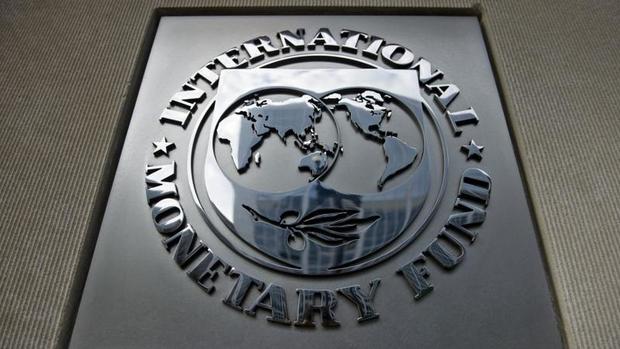 In this file photo taken on June 30, 2015 a logo is seen outside the headquarters of the International Monetary Fund in Washington, DC. (BRENDAN SMIALOWSKI / AFP)
In this file photo taken on June 30, 2015 a logo is seen outside the headquarters of the International Monetary Fund in Washington, DC. (BRENDAN SMIALOWSKI / AFP)
SINGAPORE/WASHINGTON - The International Monetary Fund on Tuesday raised its 2023 global growth outlook slightly due to "surprisingly resilient" demand in the United States and Europe, an easing of energy costs and the reopening of China's economy.
The IMF said global growth would still fall to 2.9 percent in 2023 from 3.4 percent in 2022, but its latest World Economic Outlook forecasts mark an improvement over an October prediction of 2.7 percent growth this year with warnings that the world could easily tip into recession.
For 2024, the IMF said global growth would accelerate slightly to 3.1 percent, but this is a tenth of a percentage point below the October forecast as the full impact of steeper central bank interest rate hikes slows demand
For 2024, the IMF said global growth would accelerate slightly to 3.1 percent, but this is a tenth of a percentage point below the October forecast as the full impact of steeper central bank interest rate hikes slows demand.
ALSO READ: IMF projects China's economic growth to reach 5.2% in 2023
IMF chief economist Pierre-Olivier Gourinchas said recession risks had subsided and central banks are making progress in controlling inflation, but more work was needed to curb prices.
"We have to sort of be prepared to expect the unexpected, but it could well represent a turning point, with growth bottoming out and then inflation declining," Gourinchas told reporters of the 2023 outlook.
Strong demand
In its 2023 GDP forecasts, the IMF said it now expected U.S. GDP growth of 1.4 percent, up from 1.0 percent predicted in October and following 2.0 percent growth in 2022. It cited stronger-than-expected consumption and investment in the third quarter of 2022, a robust labor market and strong consumer balance sheets.
It said the euro zone had made similar gains, with 2023 growth for the bloc now forecast at 0.7 percent, versus 0.5 percent in the October outlook, following 3.5 percent growth in 2022. The IMF said Europe had adapted to higher energy costs more quickly than expected, and an easing of energy prices had helped the region.
ALSO READ: IMF: Fragmentation could cost global economy 7% of GDP
Britain was the only major advanced economy the IMF predicted to be in recession this year, with a 0.6 percent fall in GDP as households struggle with rising living costs, including for energy and mortgages.
At the same time, India's outlook remains robust, with unchanged forecasts for a dip in 2023 growth to 6.1 percent but a rebound to 6.8 percent in 2024, matching its 2022 performance.
Risks, up and down
The IMF said there were both upside and downside risks to the outlook with built-up savings creating the possibility of sustained demand growth, particularly for tourism, and an easing of labor market pressures in some advanced economies helping to cool inflation, lessening the need for aggressive rate hikes.
Although headline inflation has come down in many countries, a premature easing of financial conditions leaves markets vulnerable to sudden repricings if core inflation readings fail to come down.
READ MORE: IMF: Global debt soars post-COVID despite big fall in 2021
Gourinchas said core inflation may have peaked in some countries such as the United States, but central banks need to stay vigilant and be more certain that inflation is on a downward path, particularly in countries where real interest rates remain low, such as in Europe.
"So we're just saying, look, bring monetary policy slightly above neutral at the very least and hold it there. And then assess what's going on with price dynamics and how the economy is responding, and there will be plenty of time to adjust course, so that we avoid having overtightening," Gourinchas said.


